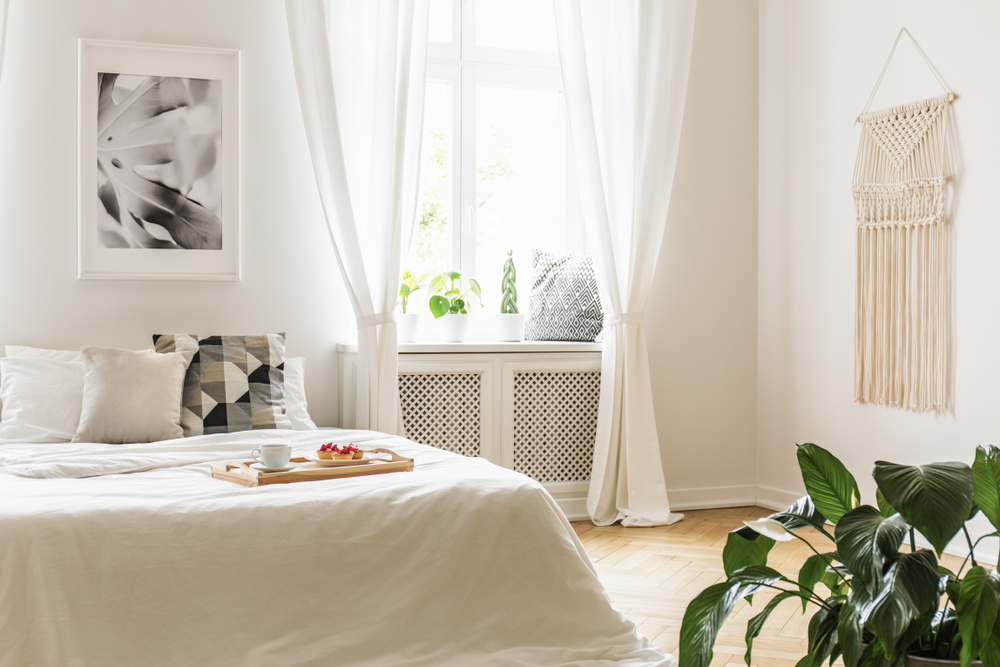
Life at Home During the Pandemic: How Can We Make Our Homes Healthy?
octobre 5, 2020 — The Big Picture
Over 90% of our time is spent indoors, two-thirds of which is ordinarily spent at home. The COVID-19 pandemic has only amplified that time, making it more important than ever to focus on the impact that our home environments can have on our physical and mental health and wellbeing. Informed by leading research on health and the built environment, Delos — the global wellness and real estate pioneer — offers some strategies to enhance indoor environmental conditions to help protect our health and wellbeing.
Clean Air is Indispensable to Health
When we think about air pollution, we usually imagine the outdoor environment. However, the concentration of toxins, allergens and other pollutants can be up to five times higher indoors. Furthermore, almost 75% of our exposure to very small particulate matter (PM2.5), one of the most dangerous air pollutants, occurs in our homes. Air pollutants are associated with a host of adverse health effects ranging from eye, nose and throat irritation and headaches to diabetes, cardiovascular disease, lung cancer, and respiratory issues. Sources of indoor pollutants can include combustion activities such as cooking or burning candles; pets and pests; dampness and mold; emissions from building materials and furnishings; and infiltration of outdoor pollution. Furthermore, pathogens such as bacteria and viruses can be spread through indoor air, and early evidence indicates that infectious novel coronavirus particles can remain suspended in the air for several hours.
There are a number of solutions to help purify the air in our homes. Ventilation systems can help dilute the concentration of pollutants and airborne pathogens by bringing in fresh air from the outdoors. Installing high-rated MERV filters (MERV 13 and above) and HEPA filters can help remove indoor particles, and activated carbon filters can help reduce organic chemicals. Air quality monitors can help track pollutant levels both indoors and outdoors. If the outdoor air quality is poor, all windows, doors, and fresh-air intakes of AC units should be closed.
Water is an Essential Building Block of Life
Over 50% of an adult’s body weight consists of water. Despite advanced treatment technologies, water can still be vulnerable to pollution by biological, chemical, and mineral contaminants that, especially in high doses, can be toxic and impair health and overall quality of life. Conventional water treatment does not always remove contaminants effectively, and water treatment and distribution systems may even introduce additional pollutants. Finally, because scientific knowledge concerning pollutants is always evolving, it is challenging for water quality regulations and treatment methods to keep pace.
Filtration is one of the most effective treatment methods for mitigating water quality concerns in the home. Filters can be whole-home or location-specific, and different types of filters can be used to target different types of contaminants, depending on the concern.
Light Helps Regulate Critical Body Functions
Our bodies are naturally programmed to function on a cycle — known as the circadian rhythm — that matches the solar day. The circadian rhythm is primarily synchronized by light, and affects many functions of the body, including the sleep-wake cycle, alertness, cognition, mood, and metabolism. Long-term disruption or desynchronization of the circadian rhythm and related hormones (e.g., through exposure to bright light at night) has been linked to obesity, diabetes, depression, metabolic disorders, breast cancer, and impaired immune response.
Daily, regularly-timed exposure to light helps us maintain a healthy and robust circadian rhythm through a process called “entrainment.” Controllable indoor lighting can be tuned to mirror natural sunlight patterns, delivering bright, blue-spectrum light in the morning and warmer light in the evening. Blackout shades and night lighting help to reduce night time exposure to light.
Thermal Comfort Matters
Thermal comfort — the subjective experience of feeling satisfied with one’s thermal condition — has been ranked as one of the most important contributing factors to our overall satisfaction with our indoor environments. Our bodies have a basic need to thermoregulate, or maintain a constant internal temperature within a specific range. Cold indoor temperatures have been linked to respiratory and cardiovascular problems, as well as poorer mental wellbeing. Hot temperatures can be similarly detrimental.
Maintaining thermal comfort within our homes is essential for our health. Reliable heating and cooling systems help ensure safe and thermally comfortable living environments. The World Health Organization recommends temperatures within the 64.4–75.2F (18–24°C) range.
Materials Can Pollute Our Homes
Building materials and home products — from cleaning products to furniture to paints — can contain a number of different chemicals: some are benign, while others are known to be hazardous. Due to tightly sealed buildings and long-term use of materials, hazardous pollutants such as lead, asbestos, and volatile organic chemicals (VOCs) can remain present indoors for long periods of time.
As viral transmission concerns increase our reliance on cleaning products and disinfectants, it is critical to be mindful of harmful chemical emissions. Ventilation is important to reduce the concentration of hazardous pollutants in enclosed spaces, and effective and safer substitutes are available for many products and materials.
Interior Design Can Enhance Wellbeing
Our experience of a space — from our sense of comfort to wellbeing — is shaped by its design. Designing our spaces to be accessible and usable by every member of the household, and considering future possibilities of limited mobility or temporary limitations, can help ensure that our homes serve us best in the long-term.
Design elements that enhance our interaction with nature can help us cope with the stresses and uncertainties brought on by COVID-19. Integrating plants, paintings, or outdoor views can support our physical and psychological wellbeing — including our mental awareness, recovery from stress, and happiness. Noise pollution is another stressor that can intrude into homes and cause health issues such as cardiovascular problems. This can be mitigated through sound-insulating walls and windows, as well as noise machines, which help to prevent or mask noise.
Photo by Photographee.eu on Shutterstock